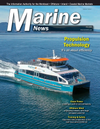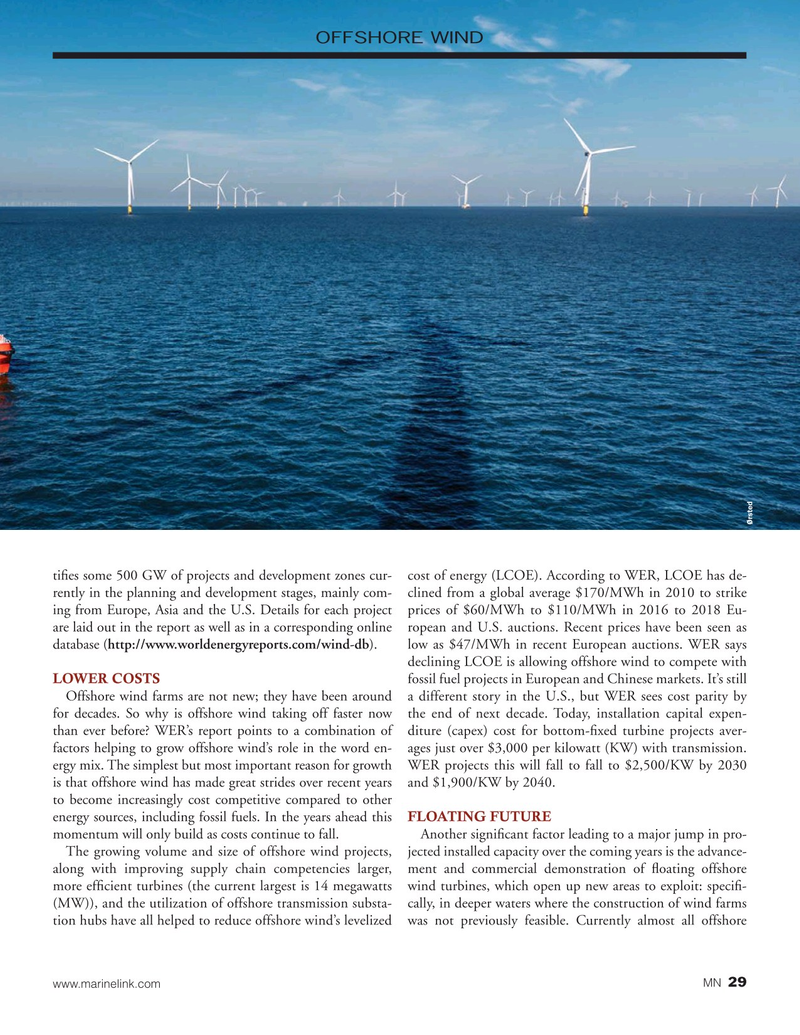
Page 29: of Marine News Magazine (July 2020)
Propulsion Technology
Read this page in Pdf, Flash or Html5 edition of July 2020 Marine News Magazine
OFFSHORE WIND
Ørsted ti?es some 500 GW of projects and development zones cur- cost of energy (LCOE). According to WER, LCOE has de- rently in the planning and development stages, mainly com- clined from a global average $170/MWh in 2010 to strike ing from Europe, Asia and the U.S. Details for each project prices of $60/MWh to $110/MWh in 2016 to 2018 Eu- are laid out in the report as well as in a corresponding online ropean and U.S. auctions. Recent prices have been seen as database (http://www.worldenergyreports.com/wind-db). low as $47/MWh in recent European auctions. WER says declining LCOE is allowing offshore wind to compete with
LOWER COSTS fossil fuel projects in European and Chinese markets. It’s still
Offshore wind farms are not new; they have been around a different story in the U.S., but WER sees cost parity by for decades. So why is offshore wind taking off faster now the end of next decade. Today, installation capital expen- than ever before? WER’s report points to a combination of diture (capex) cost for bottom-?xed turbine projects aver- factors helping to grow offshore wind’s role in the word en- ages just over $3,000 per kilowatt (KW) with transmission. ergy mix. The simplest but most important reason for growth WER projects this will fall to fall to $2,500/KW by 2030 is that offshore wind has made great strides over recent years and $1,900/KW by 2040. to become increasingly cost competitive compared to other energy sources, including fossil fuels. In the years ahead this FLOATING FUTURE momentum will only build as costs continue to fall. Another signi?cant factor leading to a major jump in pro-
The growing volume and size of offshore wind projects, jected installed capacity over the coming years is the advance- along with improving supply chain competencies larger, ment and commercial demonstration of ?oating offshore more ef?cient turbines (the current largest is 14 megawatts wind turbines, which open up new areas to exploit: speci?- (MW)), and the utilization of offshore transmission substa- cally, in deeper waters where the construction of wind farms tion hubs have all helped to reduce offshore wind’s levelized was not previously feasible. Currently almost all offshore 29 www.marinelink.com MN

 28
28

 30
30
